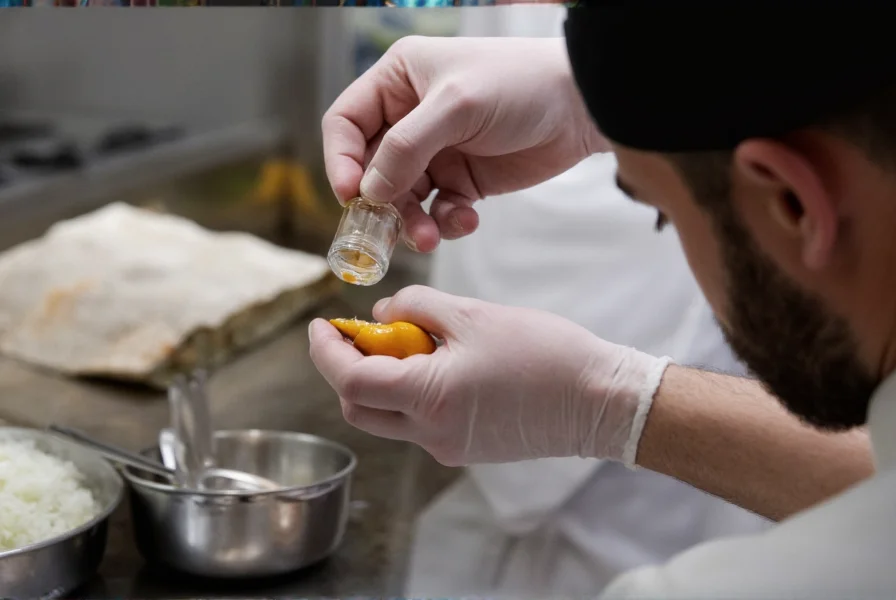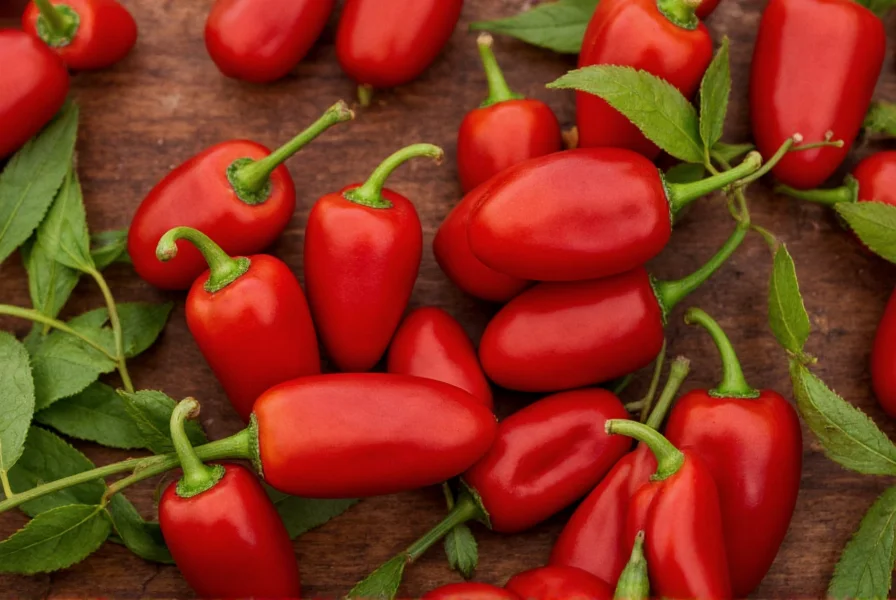For chili enthusiasts and heat seekers, Pepper X represents the current frontier of extreme capsaicin levels in cultivated peppers. This comprehensive guide provides verified information about Pepper X's development, heat measurement, physical properties, and practical considerations for those curious about the world's hottest officially recognized pepper.
The Development of Pepper X
Ed Currie, founder of PuckerButt Pepper Company, spent over a decade developing Pepper X through selective breeding. Unlike many superhot peppers that emerged from accidental crosses, Pepper X was the result of deliberate cultivation aimed at creating a pepper with unprecedented heat while maintaining flavor complexity. The development process involved multiple generations of selective breeding, focusing on both heat concentration and plant viability.
Currie's work built upon his previous creation, the Carolina Reaper, which held the Guinness World Record from 2013 until Pepper X's certification in 2023. The breeding program carefully selected parent plants with desirable traits, including disease resistance, yield potential, and of course, extreme capsaicin production.
Heat Level Verification and Measurement
The official Scoville rating for Pepper X comes from independent laboratory testing conducted for Guinness World Records verification. Multiple samples were analyzed using high-performance liquid chromatography (HPLC), the scientific standard for measuring capsaicinoids that cause the burning sensation in chili peppers.
| Pepper Variety | Average Scoville Heat Units | Guinness World Record Status | Year Certified |
|---|---|---|---|
| Pepper X | 2,693,000 SHU | Current record holder | 2023 |
| Carolina Reaper | 1,641,183 SHU | Previous record holder | 2013-2023 |
| Trinidad Moruga Scorpion | 1,200,000 SHU | Former record holder | 2012 |
| Ghost Pepper (Bhut Jolokia) | 855,000 SHU | Former record holder | 2007-2011 |
It's important to note that Scoville ratings represent averages, as heat levels can vary between individual peppers and even within different parts of the same pepper. The placenta (white ribs inside the pepper) contains the highest concentration of capsaicinoids.

Physical Characteristics and Flavor Profile
Pepper X exhibits several distinctive physical traits that differentiate it from other superhot peppers. The mature pods typically measure 1-2 inches in length with an irregular, somewhat bumpy appearance. They develop from green to a deep red when fully ripe, though some variations may show darker purple hues.
Despite its extreme heat, Pepper X offers more than just burn. Those who have experienced it describe a complex flavor profile that begins with a subtle fruity sweetness before the intense heat takes over. The initial flavor notes give way to a prolonged, intense burning sensation that can last for significant periods. This dual characteristic of flavor followed by extreme heat makes it valuable for specialty hot sauces where controlled application can deliver both taste and heat.
Safety Considerations for Handling Pepper X
Working with Pepper X requires serious safety precautions due to its extreme capsaicin concentration. The following guidelines are essential for anyone handling this pepper:
- Always wear nitrile gloves (latex is insufficient) when handling Pepper X
- Use protective eyewear to prevent accidental contact with eyes
- Work in a well-ventilated area or consider using a respirator mask
- Avoid touching your face or other body parts during handling
- Wash all surfaces and tools thoroughly after use
- Keep children and pets away from the work area
Accidental exposure to skin can cause severe burning that lasts for hours. If exposure occurs, wash the area with soap and water, then apply milk or a specialized capsaicin removal product. For eye exposure, flush immediately with water for at least 15 minutes and seek medical attention.
Culinary Applications and Responsible Use
Pepper X's extreme heat means it has very limited direct culinary applications. Most experienced users recommend:
- Using only microscopic amounts in cooking (a toothpick tip quantity can flavor an entire dish)
- Creating infused oils or vinegars where the heat distributes more evenly
- Manufacturing commercial hot sauces with precise dilution
- Avoiding direct consumption of raw Pepper X
Many professional chefs and hot sauce makers use Pepper X as a "heat booster" rather than a primary ingredient. When properly diluted, it can add significant heat without overwhelming a dish's other flavors. The key principle is starting with extremely small quantities and gradually increasing only if necessary.

Growing Pepper X Plants
For gardeners interested in cultivating Pepper X, several specific considerations apply:
- Requires 90-120 days to maturity from seed
- Needs warm temperatures (70-90°F) for optimal growth
- Requires well-draining soil with consistent moisture
- Plants typically reach 3-4 feet in height
- Produces moderate yields of 10-20 peppers per plant
- Seeds require careful handling and proper storage
Due to its extreme heat, growers should clearly label plants and take precautions to prevent accidental contact. Some jurisdictions have restrictions on growing superhot peppers, so checking local regulations is advisable before planting.
Commercial Availability and Products
Pepper X remains relatively rare in commercial cultivation due to its extreme nature. However, several products have emerged featuring this record-breaking pepper:
- Limited edition hot sauces specifically formulated with Pepper X
- Pepper X-infused oils and vinegars
- Dried Pepper X flakes and powders (in extremely small quantities)
- Seeds for home cultivation (with appropriate warnings)
When purchasing Pepper X products, consumers should verify the source and look for proper handling instructions. Reputable vendors provide clear warnings about the extreme heat level and usage guidelines.
Understanding the Significance of Pepper X
Pepper X represents more than just a record-breaking heat level. Its development demonstrates the ongoing evolution of chili pepper breeding and the scientific understanding of capsaicin production. The research behind Pepper X contributes to our knowledge of plant genetics, heat tolerance, and potential medical applications of capsaicinoids.
While the pursuit of ever-hotter peppers continues, Pepper X serves as a reminder of the importance of responsible handling and realistic expectations. For most consumers, experiencing Pepper X should be approached with caution and respect for its extreme properties rather than as a casual challenge.
Frequently Asked Questions
How does Pepper X compare to the Carolina Reaper in heat level?
Pepper X significantly surpasses the Carolina Reaper in heat, with an official Scoville rating of 2.693 million units compared to the Carolina Reaper's 1.641 million units. This represents approximately 64% more heat than the previous record holder. The difference is substantial enough that Pepper X requires even more stringent safety precautions during handling.
Can humans safely consume Pepper X?
While humans can technically consume Pepper X in extremely diluted forms, eating it directly is not recommended and can cause serious physical reactions including severe pain, vomiting, and potential esophageal damage. Even experienced "heat seekers" typically use only microscopic amounts in cooking. Medical professionals advise against consuming pure Pepper X due to the risk of chemical burns in the digestive tract.
What are the medical applications of Pepper X's extreme capsaicin content?
Research into capsaicinoids from extreme peppers like Pepper X shows potential applications in pain management, particularly for neuropathic pain conditions. The concentrated capsaicin can temporarily desensitize nerve receptors. However, medical applications require highly controlled formulations and administration methods, not direct consumption of the pepper itself. Current medical capsaicin treatments use precisely measured concentrations far below what's found in Pepper X.
How should I store Pepper X products safely?
Store Pepper X products in clearly labeled, airtight containers away from children and pets. Keep them in a cool, dark place but avoid refrigeration which can increase capsaicin volatility. Always store away from regular spices to prevent accidental misuse. Consider using secondary containment (like a sealed plastic bin) to contain any potential leaks. When handling stored products, always use protective gloves regardless of how much time has passed since previous use.
Is Pepper X genetically modified?
No, Pepper X is not genetically modified. It was developed through traditional selective breeding techniques over many years, crossing various pepper varieties to concentrate desirable traits including extreme heat. The development followed conventional plant breeding methods without genetic engineering or laboratory-based DNA modification.











 浙公网安备
33010002000092号
浙公网安备
33010002000092号 浙B2-20120091-4
浙B2-20120091-4